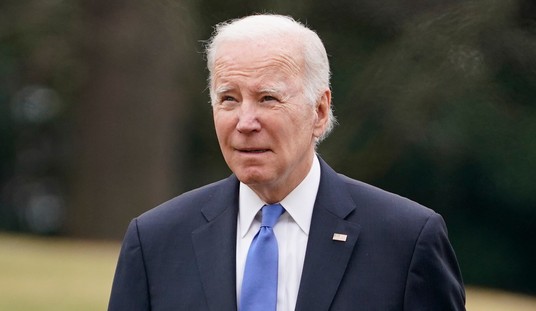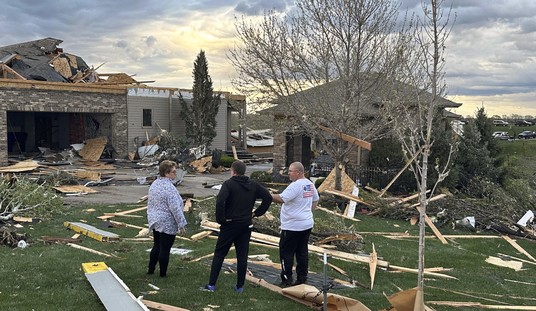The biggest news this week on the international stage was the bombing of a hospital in Gaza on Tuesday. Except it was not actually a bombing. It was actually hit with a launched ordinance. Except, the building was not actually hit, as the impact and explosion were in a parking area. As of now, the actual number of fatalities this caused is unknown.
These shifting details have been reflected in the continuously altered headlines and reconstituted article contents in the news. All of these unfocused specifics on Tuesday’s calamity (about the most accurate current descriptor) encapsulate the issues we are experiencing with our dysfunctional media complex in covering the Israel-Hamas war. The journalism being delivered is on a shameful level, and these vaunted news outlets now have the stones to try placing the blame elsewhere.
Instead of sober analysis and corrective measures being taken, many of these same outlets are brazenly coming out with hoped-for distractions decrying the misinformation seen on social media. The New York Times was among the worst offenders of the false reports, blasting a headline blaming Israel and delivering the unattributed death toll. It went so far as displaying the story on its front page, including a photo of a bombed structure. This was sheer media malpractice, as not only was this a building from another part of Gaza, but the hospital itself was not damaged, save for the loss of windows from the blast.
The amount of major news outlets who completely butchered their credibility with this errant accusation that Israel “bombed” a hospital is both pathetic, and unsurprising.
— Brad Slager: CNN+ Lifetime Subscriber (@MartiniShark) October 18, 2023
The @NYTimes was not alone, but possibly the worst example.
1/ pic.twitter.com/pUuDV7MgBP
Then, in audacious fashion, the paper that blindly ran with the story that had been spoon-fed from Hamas dared the next day to report on how Hamas has been leveraging social media to push out its propaganda. “Posts supporting the group that carried out terrorist attacks in Israel this month are still reaching mass audiences on social networks.” Yeah, um...that sounds exactly like what The Times did Tuesday evening after the hospital blast. They actually try to suggest that posts on TikTok do serious damage, but one of the planet’s most widely read news outlets delivering patently false wartime accusations is not to be considered problematic.
Joining in with the desperate finger-pointing deflections was the Washington Post. It, too, was among the outlets repeating the baseless accusations made by Hamas. And, in an identical fashion, the Post pretends to be dismayed that Hamas is managing to get its message out…via social media. “Over a rapid-fire series of nearly two dozen messages in Arabic and English, Hamas told its online audience of hundreds of thousands that the “massacre” had come from an Israeli airstrike.” Funny, other sources were also helping Hamas broadcast that blame on Israel.
Say, Washington Post - want to know how else Hamas is getting its fraudulent message out?
— Brad Slager: Flips On The Highbeams In Fog Of War (@MartiniShark) October 19, 2023
With the help of THE WASHINGTON POST!
Hamas turns to social media to get its message out — and to spread fear https://t.co/c8FPEW4Znx pic.twitter.com/kUJE8eDEsN
Reuters was among the first to run the “Israeli bombing” reports, and as an international news syndicate feeding numerous news agencies, its reach and impact were immense as it spread the false claims. Again, the very next day, this news source dared to run a piece condemning the “Disinformation Surge That Threatens to Fuel” the war currently taking place. This is projection of the lowest order.
The BBC has been another outlet reducing its reputation to rubble. After embarrassing itself over a refusal to use the term “terrorism” for the barbarism by Hamas, it also led the charge in citing Israel as targeting the hospital. Meanwhile, one of its disinformation correspondents was lecturing that false information in this time “can have serious consequences.” Another BBC debunker, Shayan Sardarizadeh, told Reuters just days before his outlet’s debacle of reporting that “You have to be 100% certain before publishing and show the audience why something is false.”
Oh, dear journalist, heal thyself.
The wildly inaccurate reports were not simply stumbles during the dizzying early moments of an unfolding story; these false reports led to very real negative responses. As a result of the “Israel bombing” becoming “confirmed,” we saw demonstrations break out in numerous countries. Riots developed at the Israeli embassy in Turkey and the U.S. embassy in Lebanon. A planned peace accord with Joe Biden was canceled by the leadership in Jordan, citing the hospital “attack” as the reason.

These are the very same news networks and outlets that screech loudly about lies and deceptive reports. They frequently bray about the threats of false stories, and yet they showed that these same outlets not only engage in falsehoods but do so on a pernicious level. In the days since this remarkably bad outbreak of journalism, there has been little in the way of corrective measures. As I cited above, all we have seen are sly changes in headlines and unattributed stealth edits in the story content. There has been little to be seen of open corrections and mea culpas.
In light of this jarringly horrible news reporting across numerous prominent outlets, pleas for mercy are being made. Nate Silver suggested being sympathetic due to how difficult it is to operate as a journalist when major stories are breaking in real time. CNN’s media maven Oliver Darcy managed to be somewhat critical but also went on the defensive, saying in his Reliable Sources newsletter, “In the rush to quickly get information out to the public during rapidly developing situations, mistakes can be made. The first draft of history is not always perfect. The fog of war is very real.”
One problem with this approach of understanding: It is the very same networks that are producing the fog they are supposedly falling victim to in reporting. What Darcy describes here is the mad rush leading to problems. They were so consumed with being first that they did not care about being accurate. Just look at the way one of the basic rules of journalism was tossed aside – always confirm with more than one source.
Instead, the news outlets were not only content to rush out with a solitary originator; it was coming from a deeply flawed source – Hamas. Looking at claims from this group should have led to increased diligence and a pause for the facts, but instead, they ran with the headlines blaming Israel and boldly stating that 500 lives were lost. This has led to a complete wave of caustic shame to wash over the news industry.
Darcy went on to say, “It is of paramount importance for news organizations to remain in a heightened state of vigilance — especially during moments of breaking news when the stakes could not be higher and the situation remains fluid.” Well, sir, if those stakes could not be higher, then the utter failures seen from the most prominent of news outlets could not be any lower.














Join the conversation as a VIP Member